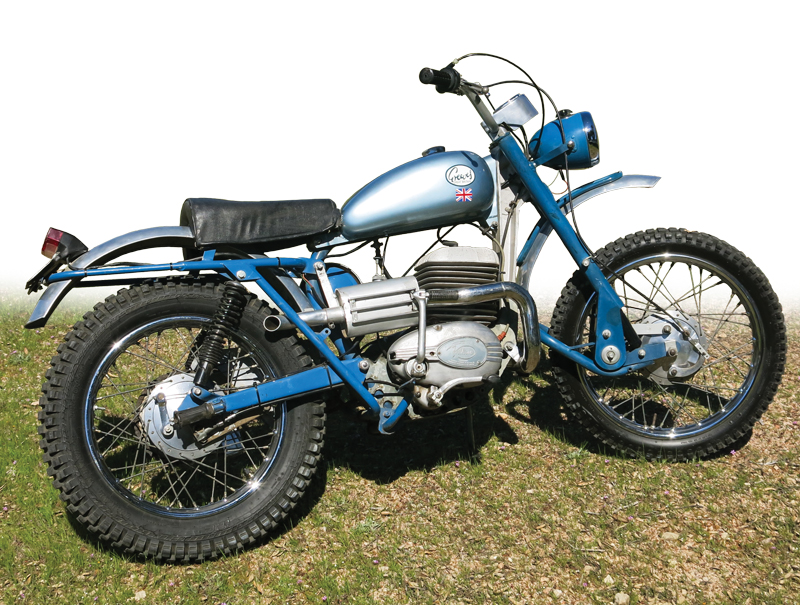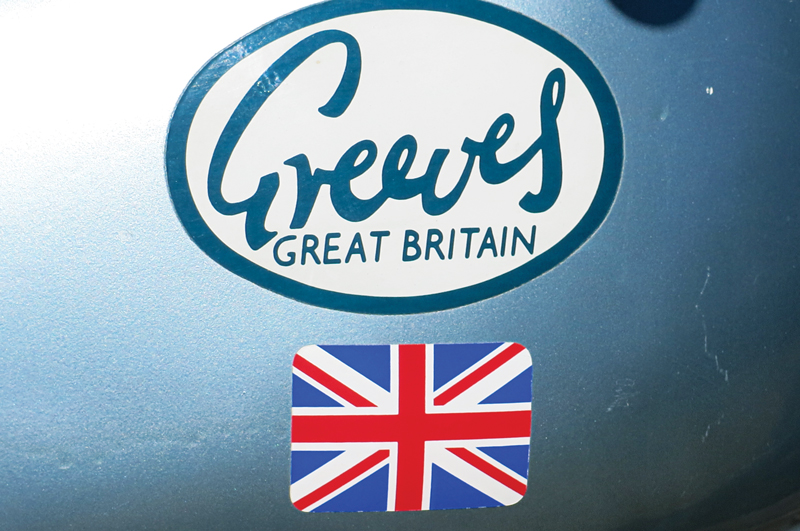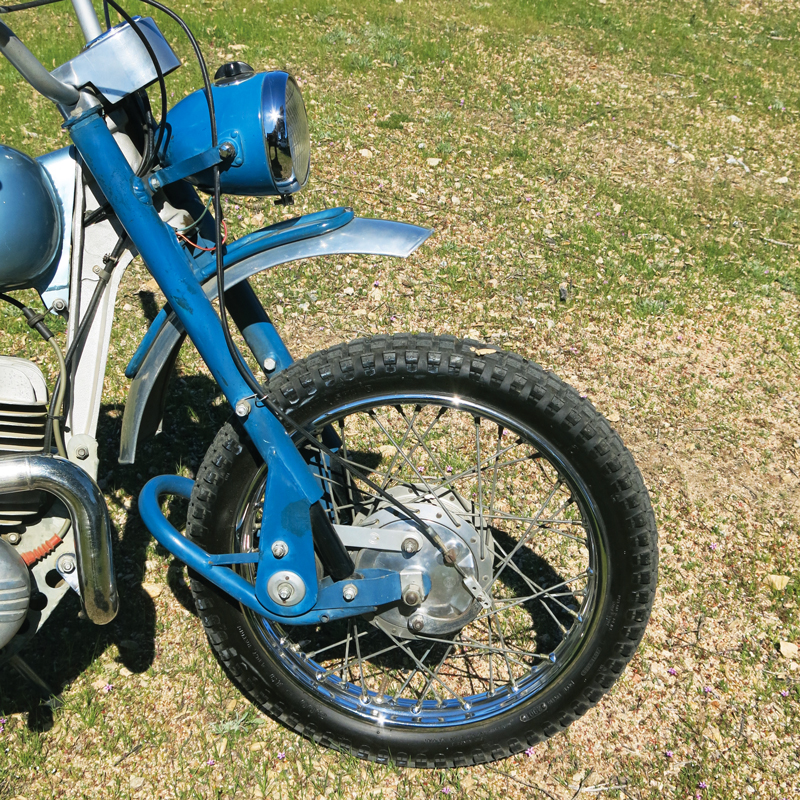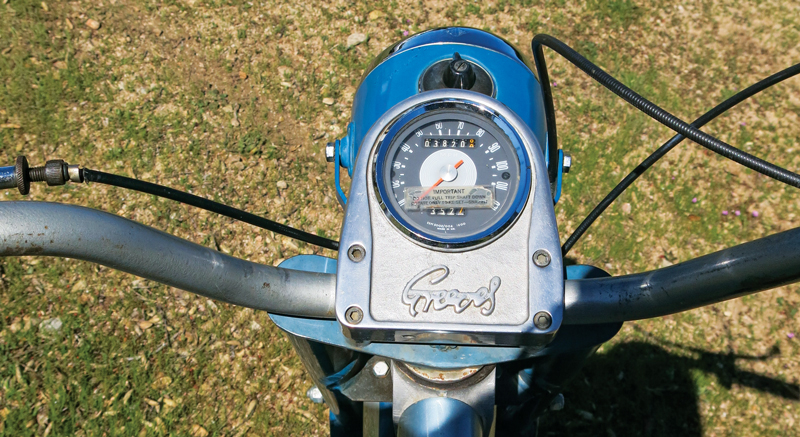
Few motorcyclists today are familiar with the Greeves name, but it was an interesting company, and had quite a bit of clout in this country back in the late 1950s and ’60s. Bert Greeves was an English fellow who got his start following World War II by bolting motorcycle engines into wheelchairs, and started a company called Invacar (Invalid’s Car). And to help construct these three-wheelers he added a light-alloy foundry to his factory, which was located in the appropriately named (for a motorcyclist) town of Thundersley, in Essex County northeast of London.
As an avid motorcyclist, he then got the notion of building a motorcycle, using someone else’s engine but his own chassis. At the Earls Court Show in London in late 1953, the initial Greeves line had several roadsters and a scrambler powered by two-stroke engines from the Villiers Engineering Co., Ltd. If one wonders where the Villiers name came from, the factory was on Villiers Street in Wolverhampton, and sold engines to a dozen small British motorcycle manufacturers.

What made the Greeves stand out was the design of the frame and suspension. Instead of tubes, the frame, built in his own foundry, was essentially an aluminum-alloy I-beam that went down from the steering head and bolted on to I-beam cradles for the engine/transmission unit. A tubular steel backbone, made of Reynolds 531, went back to a tubular subframe. This I-beam frame was both lighter and stronger than conventional tubular constructions. The front fork was a Greeves design, and instead of springs had, “at the base of the stanchions, short leading links pivoting in rubber-in-torsion bushes….” Not sure what a rubber-in-torsion bush is, but apparently it worked well.
Being an observed trials riding enthusiast, Greeves developed a 250 trials model called the Scottish, after a noted trials event in — you guessed it — Scotland. This won gold in the 1958 International Six Days Trial, and gold again in the 1959 ISDT. Soon competition models ruled the company roost, with scrambler, trials, motocross and road-racing models. In 1963 the British ISDT team asked Greeves to supply motorcycles, and he happily complied. Gold again, and the lone woman contestant won a bronze on a Greeves.

Back in 1958 a forward-thinking Californian by the name of Nick Nicholson began importing Greeves bikes, and soon the desert racing four-strokes were smelling two-stroke exhaust. Nick was selling a lot of racers, but the roadsters were not very popular in this country, riders preferring bigger bikes. In 1964 Nick saw an opening for a new model, a trail version of the 250 trials. With a few mods like lights, a speedometer and a more comfortable seat, this could be sold to people who just wanted to have fun going along some back roads and cow trails. Done!
This motorcycle was powered by the Villiers 34A 250 single-cylinder engine used in several models, including the trials, and was 246cc, with a 66mm bore, 72mm stroke. To improve the power Greeves made his own aluminum-alloy cylinder and head. The 1965 Trail/Enduro model was an “export-only” bike, and it beat the Yamaha DT-1 to the market by two years. It had an 11:1 compression ratio with a Villiers S25 carburetor feeding the petroil (petrol and oil) mixture into the combustion chamber. A large air cleaner worked hard to keep the dirt and dust out. A small but efficient muffling system was tucked close to the cylinder, staying out of the way of the rider’s right leg. Sixteen horses turned the crankshaft and a primary chain used a multi-plate clutch in an oil bath to spin the four gears in the oil-filled transmission. A 15-tooth sprocket at the tranny was connected to a 54-tooth sprocket at the rear wheel, with a box-section swingarm and Girling shock absorbers.
The aesthetics of the Trail were pleasing, with that I-beam frame easily catching attention. That curiously shaped leading-link front end also attracted the eye of the onlooker. An 18-inch wheel was at the back, a 19-incher at the front, and these were shod with Dunlop Trials Universal tires. Tire technology being what it was half a century ago, they were OK in the dirt, but not recommended for high-speed cornering on wet pavement. Shiny alloy mudguards stood far enough off from the tires that even the stickiest of mud could not jam the wheels. Cable-operated drum brakes were adequate for the purpose.

No battery here, with a mag/dyno providing the electricity. No ignition switch was necessary, just a tickle on the carb and a kick on the right-side starter got things moving. Since there was no switch, nor kill button on the handlebar, stopping the engine meant stalling it by letting out the clutch while in gear. Headlight and taillight brightened with more revs, but would certainly not be legal today; the switch was on the headlight. A Smiths speedometer indicated the speed, which would top out at 60 mph or so. A 2.5-gallon (imperial sized, which is a spoonful more than three U.S. gallons) tank held the petroil, which was good for more than 100 miles. A modest seat served the purpose for one rider, but a longer one was available.
Business boomed in the mid-1960s, and then four things happened. First, with a change in British laws governing powered wheelchairs, Invacar had to shut down…and this business had always been more profitable than the motorcycle side. Second, in 1968 Villiers, now partnered with Norton, decided not to sell engines to outside companies. Third, by the early 1970s the Japanese pretty much had the dual-purpose market in hand. Fourth, Bert decided to retire. Following which the company finances floundered, not helped by a fire at the factory, and in 1977 the company went into receivership.








